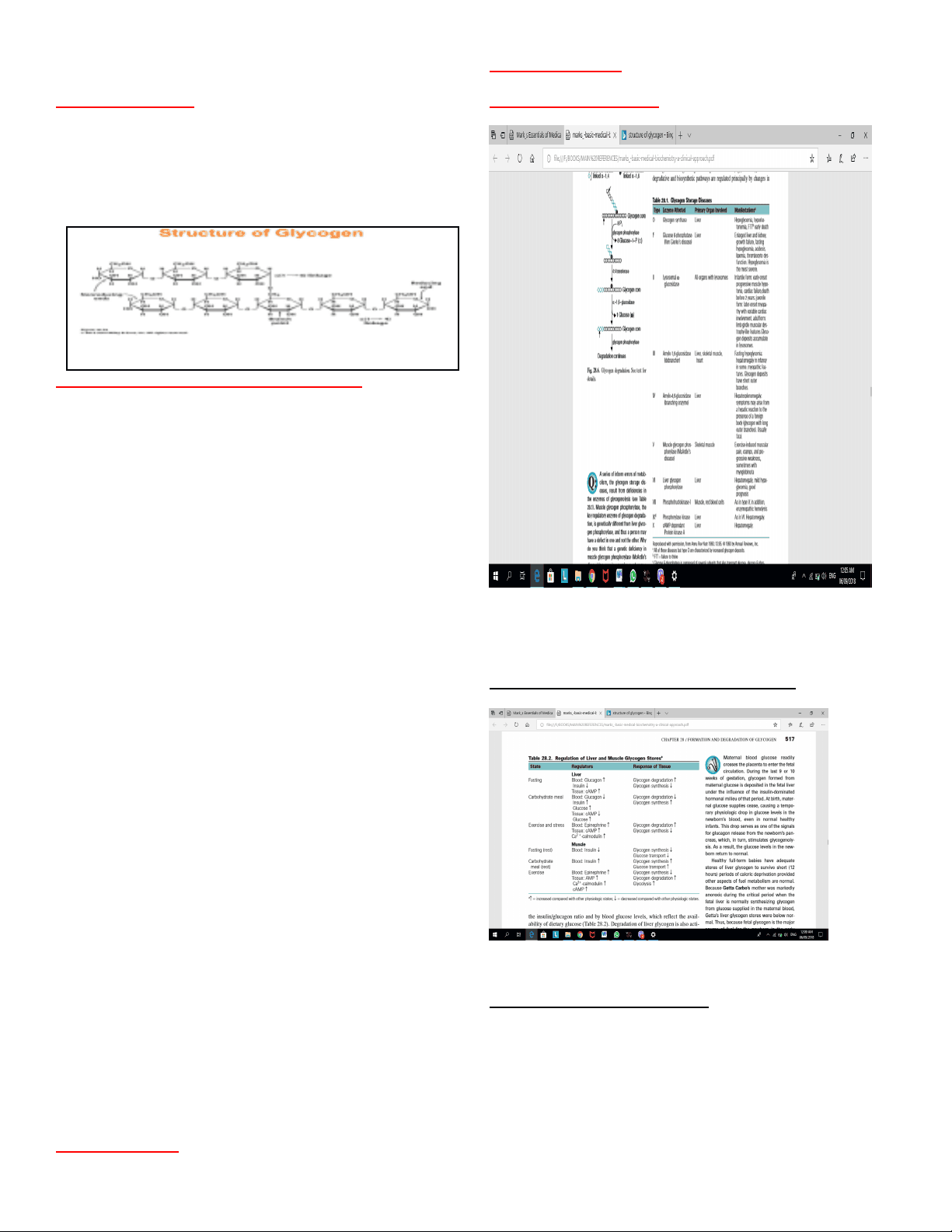



Study with the several resources on Docsity

Earn points by helping other students or get them with a premium plan


Prepare for your exams
Study with the several resources on Docsity

Earn points to download
Earn points by helping other students or get them with a premium plan
Community
Ask the community for help and clear up your study doubts
Discover the best universities in your country according to Docsity users
Free resources
Download our free guides on studying techniques, anxiety management strategies, and thesis advice from Docsity tutors
Simple Notes on glycogen and its reactions
Typology: Lecture notes
1 / 2

This page cannot be seen from the preview
Don't miss anything!


Structure of Glycogen
glucose polysaccharide composed of chains of glucosyl units linked by -1,4 bonds with -1,6 branches every 8 to 10 residues
Function of glycogen in skeletal muscle and liver
converted to glucose 6-phosphate. In skeletal muscle and other cell types, the glucose 6-phosphate enters the glycolytic pathway
Skeletal Muscle
demands are high and when glucose 6-phosphate is used rapidly in anaerobic glycolysis
generation of ATP in the absence of oxygen or during restricted blood flow
Liver
maintenance of blood glucose levels
glycogen degradation is hydrolyzed to glucose by glucose 6-phosphatase, an enzyme present only in the liver and kidneys
source of blood glucose as dietary glucose decreases,or as exercise increases the utilization of blood glucose by muscles
The pathways of glycogenolysis and gluconeogenesis in the liver both supply blood glucose, and, consequently, these two pathways are activated together by glucagon. Gluconeogenesis, the synthesis of glucose from amino acids and other gluconeogenic precursors, also forms glucose 6-phosphate,so that glucose 6-phosphatase serves as a “gateway”to the blood for both pathways
Glycogen Synthesis
Glycogen breakdown
Glycogen Storage Diseases
Regulation of Liver and Muscle Glycogen Stores
Disorders of Glycogen Metabolism